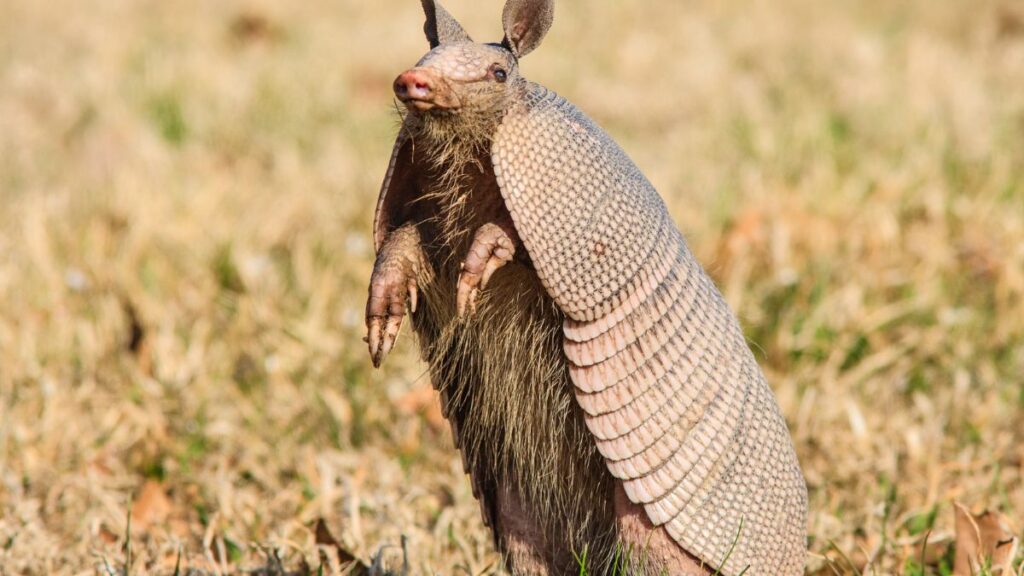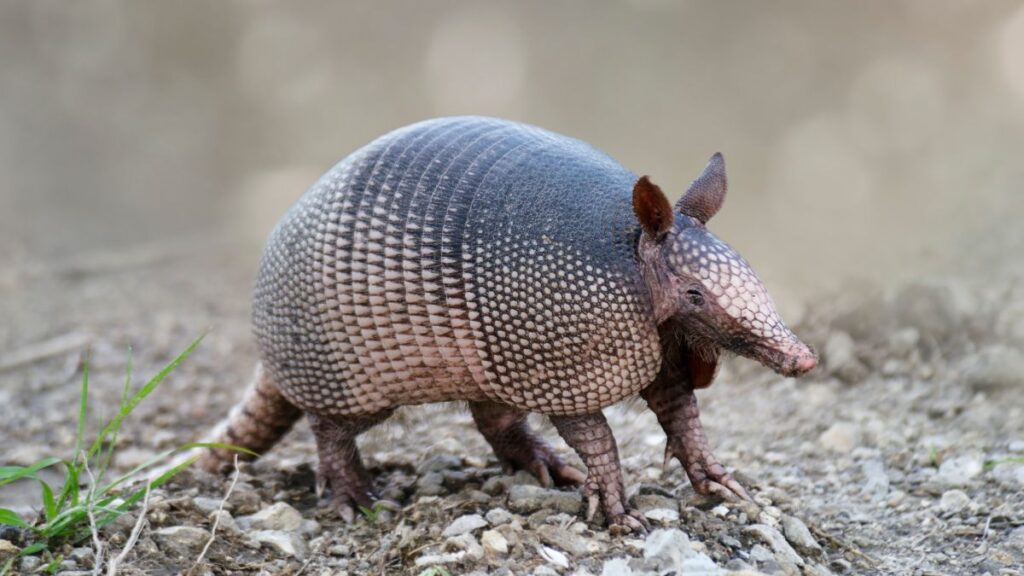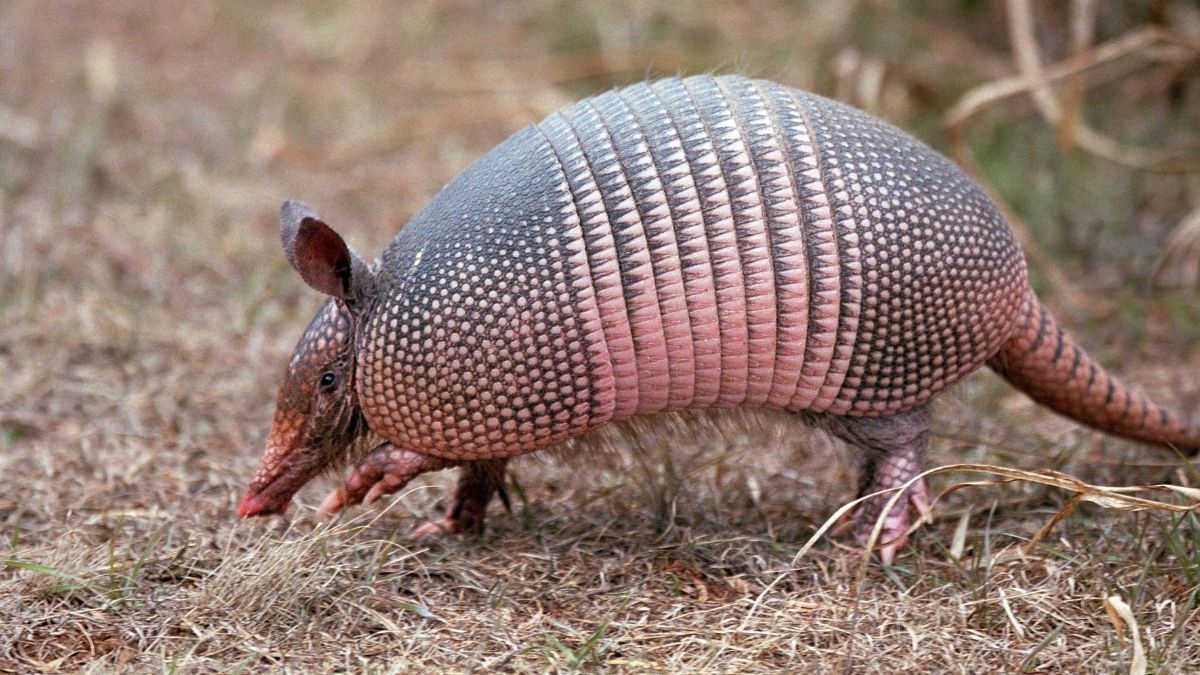The pink fairy armadillo, scientifically known as Chlamyphorus truncatus, is one of the most enigmatic and fascinating creatures in the animal kingdom. This tiny, desert-adapted armadillo is not only the smallest of its kind but also one of the most elusive, making it a subject of great interest and concern among wildlife enthusiasts and conservationists. In this article, we will delve into the current status of the pink fairy armadillo population, the challenges they face, and the efforts being made to protect this unique species.
Contents
Habitat and Distribution
The pink fairy armadillo is endemic to the deserts and scrub lands of central Argentina. Their geographic range is limited to the provinces of Mendoza, San Luis, Buenos Aires, La Pampa, and San Juan.
These armadillos inhabit dry grasslands and sandy plains, often with sparse shrubbery. They are fossorial creatures, meaning they live primarily in loose sandy dunes, which restricts their areas of habitation. The preference for sandy soils is crucial because it allows them to dig burrows easily, a behavior that is essential for their survival.
Physical Characteristics and Behavior
The pink fairy armadillo is the smallest extant armadillo species, with a body length of approximately 11 to 15 cm and an average body mass of 100 to 120 grams. They have a distinctive pinkish carapace that is attached to their body by a thin dorsal membrane, and they lack visible ears. Their digging claws are enlarged, and their tail ends in a flat, diamond-shaped tip.
These armadillos are nocturnal and solitary, spending most of their time underground. They are generalist insectivores, feeding on invertebrates such as beetles, ants, insect eggs, larvae, worms, and snails, as well as some plant material.
Also Read: What is the 1 rarest animal in the world?
Reproduction
Very little is known about the reproductive habits of the pink fairy armadillo. However, it is believed that they give birth to one or two offspring per year, similar to other armadillo species. The reproductive cycle likely occurs in the spring or early summer, but detailed studies are lacking due to the rarity and elusive nature of these animals.
Conservation Status

The pink fairy armadillo is currently listed as “Data Deficient” on the IUCN Red List of Threatened Species. This classification is due to the lack of comprehensive data on their population status, biology, and ecology. Despite this, several threats to their survival have been identified:
- Habitat Conversion: Large-scale agriculture and cattle ranching have led to the destruction of their natural habitats. The plowing of fields and compaction of soil by livestock make it difficult for the armadillos to maintain their burrows.
- Predation: Domestic dogs and cats are significant predators of the pink fairy armadillo. These pets often roam freely in the armadillos’ habitat and can easily dig up their burrows.
- Pesticide Use: The use of pesticides in agricultural fields is another threat. These chemicals can adhere to the ants and other insects that the armadillos feed on, which can be detrimental to their health.
- Climate Change: The armadillos are highly susceptible to changes in climate. Cold temperatures can be particularly harmful due to their low metabolism rate and inability to store fat.
- Black Market Pet Trade: Despite their poor survival rate in captivity, there is a growing black market for pink fairy armadillos as pets. This illegal trade further threatens their population.
Population Trends
The exact number of pink fairy armadillos remaining in the wild is unknown due to the lack of comprehensive surveys and the elusive nature of the species. However, several indicators suggest that their population is declining:
- Field Sightings: The frequency of field sightings has decreased over the years. Local residents who have extensive knowledge of the area report seeing fewer armadillos than they did a few decades ago.
- Historical and Current Records: Recent studies have shown that while populations persist in some localities, the overall range and frequency of sightings have diminished. New records are being added, but these are often isolated and do not provide a clear picture of the population’s health.
- Conservation Efforts: Despite being protected by national and provincial legislation, the pink fairy armadillo remains a priority for further survey work. The species’ inclusion in protected areas such as the Lihué Calel National Park is a positive step, but more targeted conservation efforts are needed.
Challenges in Conservation
Conserving the pink fairy armadillo is fraught with challenges:
- Stress in Captivity: These armadillos have a very low survival rate in captivity due to their high stress levels when removed from their natural environment. This makes it difficult to study them in controlled settings and implement effective conservation strategies.
- Habitat Maintenance: The maintenance of their arid and semiarid habitats is crucial. However, the rapid expansion of agriculture and livestock farming continues to threaten their natural habitats.
- Lack of Data: The scarcity of data on their population dynamics and natural history hampers the development of effective conservation plans. More field research and monitoring are necessary to understand the true extent of the threats they face.
Future Prospects

Given the numerous threats and the lack of comprehensive data, the future of the pink fairy armadillo looks uncertain. Here are some steps that could be taken to improve their conservation status:
- Enhanced Field Research: Increased field activities and monitoring programs are essential to gather more data on their population size, distribution, and behavior. This will help in understanding the impact of various threats and in developing targeted conservation strategies.
- Protected Areas Expansion: Expanding protected areas and ensuring the integrity of existing ones can provide a safe habitat for the armadillos. This includes enforcing laws to prevent habitat destruction and predation by domestic animals.
- Community Engagement: Engaging local communities in conservation efforts can be beneficial. Educating locals about the importance of preserving the armadillos’ habitat and the dangers of the black market pet trade could help in reducing these threats.
- Legislative Support: Strengthening national and provincial legislation to protect the pink fairy armadillo and its habitat is crucial. This includes stricter regulations on agricultural practices and the use of pesticides.
Conclusion
The pink fairy armadillo, with its unique adaptations and elusive nature, remains one of the most intriguing yet vulnerable species in the animal kingdom. While the exact number of individuals remaining in the wild is unknown, it is clear that their population is under significant threat from habitat destruction, predation, pesticide use, climate change, and the black market pet trade.
To ensure the survival of this species, it is imperative to conduct more extensive field research, expand protected areas, engage local communities, and enforce stringent conservation laws. Only through a concerted effort can we hope to protect this tiny, yet remarkable, creature and its habitat, ensuring that the pink fairy armadillo continues to thrive in its natural environment.
Also Read: How Many Pyrenean Ibex Are Left in 2024?
